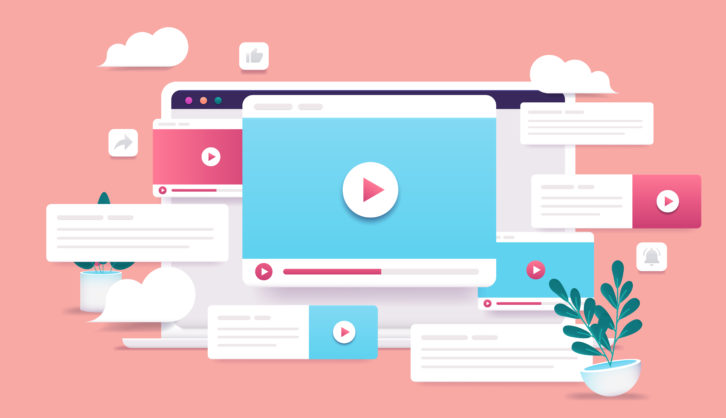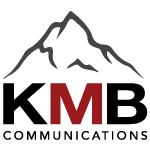From strategy to upload, here are our top tips for video production.
In my last column, I talked about the general need to embrace marketing through video and the various types of videos that can help you realize your marketing goals. Now that you have a general sense of the types of videos out there and how they can move the needle in different ways, it’s time to start thinking about the execution part of the video equation. In other words, how do you get it done?

Start With Strategy
It might sound simple, but it starts with having a strategy. Making content without a strategy is pointless and a waste of everyone’s time and energy. A strategy can help you get your video production organized so you can execute with fewer unknowns and headaches.
- Choose an Audience: You need to choose your audience first. Who are they and where do they spend time? If you haven’t already done the marketing exercise of creating personas around your brand, now is a good time to do that!
- Connect with Your Video Team: After you determine your audience, it’s time to connect with your team to align on a plan, objectives, and goals. Do you want to create buzz? Sell something? Educate? Take a look at last month’s column for guidance.
- Determine Timeline/Budget: Next, figure out your timeline and budget. Video projects scream out for project management; otherwise, they can get super-expensive and time-consuming. Think about everything you’ll need, such as thumbnails, intro and outro graphics, lower thirds, scripts, talent, and props. There’s more, but this is a good start.
- Don’t Forget About SEO: YouTube SEO is becoming just as important as Google SEO, so make sure your video is getting seen by planning for copy and keywords that play to YouTube search results. This could be an entire column in itself, and someday I’ll get to that, but there are best practices out there you can easily find with a Google search.
- Rough In Messaging: Next, it’s time to come up with a loose storyboard for your video. Develop the messages you want to convey and refine them. This will come in handy later when it’s time to write the script.
- Set Metrics Goals: Finally, figure out the key performance indicators you will use to determine if the video is successful. What are your metrics? Views? Social Sharing? Clickthrough rate? Answering questions like these will put your strategy firmly into view.
Lights, Camera, Action!
Now that you have a plan, it’s time to get moving. The process usually goes something like this:
- Create a Script: The first step is to create a script from those messaging points we mentioned earlier. Without a script, you’ll find yourself re-shooting, spending way too much time on editing, and the shoot will take longer and be more expensive. Even if it’s a loose script that seems unscripted, it’s important to have an outline of what you want to talk about and how.
- Set Up Your Video Studio: Once you have the script, it’s time to consider the equipment you’ll need for your ongoing video production needs. You’ll probably need a quality tripod, camera, lights, mics, and other audio capture gear. At KMB, we travel all over the place shooting videos for clients, so our kit is, shall we say, extensive. Be careful when you take your equipment on the road, too, because theft happens, especially at events during setup and tear-down.
- Prep Your Talent: Once you have your studio setup complete, you’ll need to start preparing those who will be featured in the video. While the pandemic certainly helped people get more comfortable being onscreen and recorded, a lens, bright fill lights, and that little red light often invokes fear in many, still to this day. Practice together and ask that they practice on their own. A lot of your time during video production will be spent ensuring those onscreen are comfortable, relaxed, and, most importantly, speaking to the key messaging points or following the script.
- Shoot the Video: There might be a bit of a learning curve for the inexperienced videographer. You’ll want to start experimenting with establishing shots, close-ups, medium shots, and other techniques as time goes on so that your videos are more dynamic than a standard talking head where the camera is static the entire time. Of course, that will require some post-production work to make all these shots work together.
- Edit Your Video: Editing is a large portion of the video-production pie and can take longer than the shoot itself! At this time, you’ll layer in music, voice-over, and any other audio you want to include, as well as sew together the best shots from the raw footage. Once the video is final, of course, you’ll want to upload it to the appropriate platform and start marketing it!
Scared yet? Don’t let any of this overwhelm you. It’s a learning process that can be a lot of fun. Of course, there are resources out there (like my firm KMB Communications) who specialize in this line of work and can take the lead or help guide you. You’ll need a budget for this — which I’ve covered in past articles.
Stay tuned for next month’s column where I’ll cover various ways you can slice and dice your content to get more mileage from it. In the meantime, give me a shout if you’d like to learn more about video production options available at [email protected].
Original article was posted here: https://www.residentialsystems.com/features/secrets-of-success/your-audience-awaits-part-2-planning-producing-your-video
